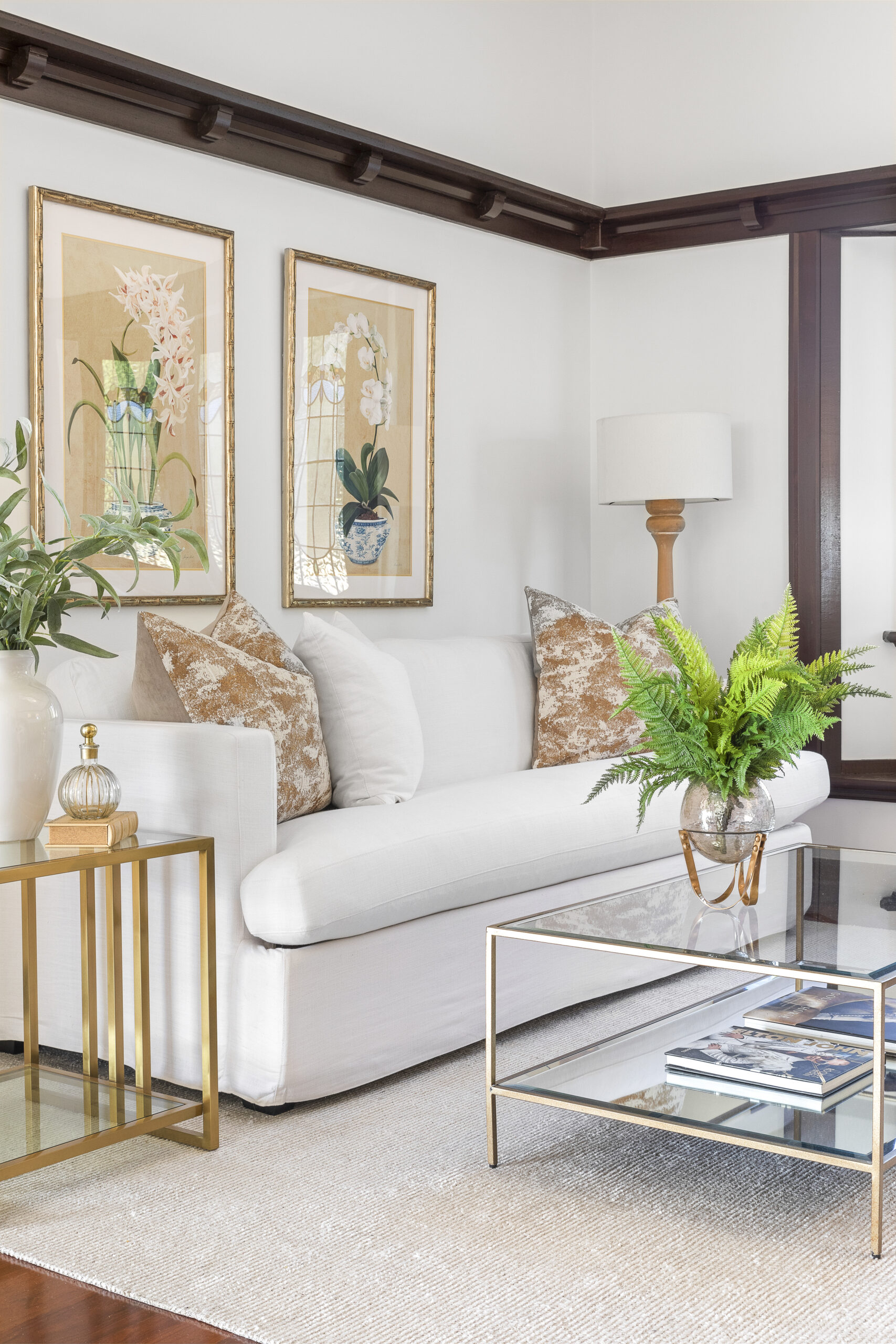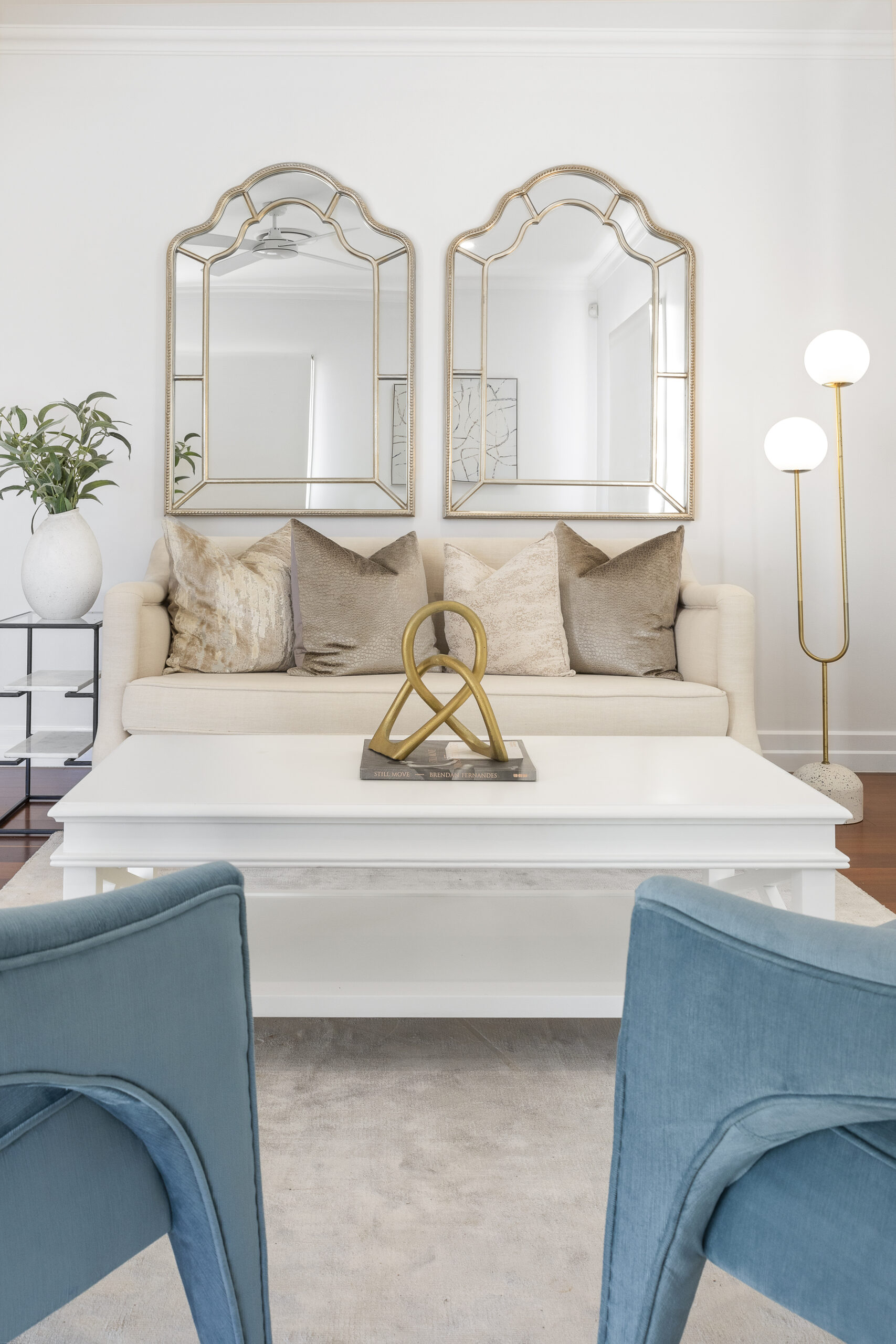When you put a house on the market, you want to highlight the things that matter the most to your buyer. And, whilst hiring a professional stylist is one option to staging your home, doing it yourself has increasingly become one too.
With the DIY movement gaining traction after quarantine and lock downs, real estate agents and home homeowners alike have started to think differently about how they can create an ideal home for their potential buyers.
Whether your goal is to increase online engagement and leads, negotiate higher sales prices, or close a sale faster, a well styled home can bring your home right to the people who will want it and buy it and reduce the time spent managing it on the market.
What is Home Staging?
Home staging is the process of preparing a property for sale by increasing its visual appeal to create a strong and memorable first impression. For the average home buyer or renter, an online listing or open house is more than just an initial look into the house – It’s an opportunity to create an emotional connection with their future home.
As a seller, you want to present a warm, welcoming space that appeals to your buyer. Small changes you make to the colour scheme, decor and furniture of a space can turn a lived-in house into an elevated and inviting home. You want to go beyond showing them the physical house, and show them the potential of a future lifestyle as its owner, by letting them picture themselves living in it.
Whether you choose to DIY or consult a professional, staging your house is one of the best ways to market your property to prospective buyers in Queensland.
So, how does DIY home styling compare against professional home styling? Let’s walk through the home staging process to compare the two options.
Step 1: Identifying the Target Demographic
Home styling starts before walls are painted, curtains are draped and furniture is placed. It’s easy to get caught up in the decorative and aesthetic aspects of home staging, but home staging starts with defining a direction for your home – who you want to sell your home to.
Professional home styling firms clearly assess the target demographic of your property, considering the neighbourhood, property type, buyer demographics & stage of life and more. By creating a thorough understanding of the buyer persona, your staged property can better match your buyer’s expectations.
Market research can be DIY’d, but with a little more effort. With the help of online property and price research tools, today you can easily and effectively find key statistics on neighborhood demographics and attributes. Commonly, these characteristics will reflect those of the average buyer – use these traits to guide your future property styling choices.
Step 2: Determining Budget Constraints
Fixing a budget early on in your project is key to achieving results within your timeline. The budget should take into consideration the desired sale price, and how a higher price may be negotiated.
Hiring a professional stylist for a project can cost an average of $5,000 in Australia. At Brisbane Makeover Co., we provide tailored quotes so you understand which aspects of the project your money is going into and how you’ll get the best value for your investment. Home staging is in essence an investment – improving the first impression of a house now, to encourage an emotional response in future buyers.
The self-sufficient approach of DIY often implies cost-savings, but conversely not engaging the services of an expert may be the more costly option. Starting a project without a plan can reveal hidden costs at all stages, but more importantly, draw time and attention away from your work in securing a successful sale.
Step 3: Identifying Existing Issues
It’s common good practice to resolve any issues in a property before it is sold. Eagle-eyed buyers are quick to spot any flaws in their future home, and can use it to negotiate price or worst case abandon the property entirely.
When assessing imperfections, it can be helpful to bring in a fresh pair of unbiased eyes to see the property wall to wall. Minor flaws may be rectified with a DIY solution, however major issues will need to be evaluated on a case-by-case basis. In the case of electrical or plumbing work, it can be illegal, unlicensed and dangerous to conduct repairs without the appropriate training.
In the case of major works, consult local contractors such as plumbers, electricians or handymen who are specialised in their respective areas. Ensure these contractors are appropriately licensed with the up-to-date and relevant qualifications of your area before they commence work to reduce any risk of harm, damage and long-term liability.
Camp Hill Project
This glamourous Queenslander sold at auction for $1,410,000. According to the agent, the styling added over $200K to the sale price.
Step 4: Defining the Rooms to be Styled
Identifying the areas you need to style is crucial to planning your property styling. When it comes to home styling, highlighting some elements of a house may be more crucial than others.
Home stylists can work alongside you to define the rooms to be styled. A buyer’s priorities will vary significantly by the stage of life they are at. Based on your target demographic they may suggest you showcase a room or section of the house that better appeals to your buyers.
For example:
- A corporate solo buyer may value a study, where they may spend a majority of their time working from home.
- A couple with 4 children looking for a family home may value the master and guest bedrooms, where their children will spend many years growing up.
If DIYing, it may be more difficult to define which areas are critical. As a general rule of thumb, prioritising the kitchen, living room, master bedroom and the entryway can provide the greatest increase in property value with minimal investment in property styling. Being the main areas people reside in, your buyers will spend the greatest time there. The appeal of these areas will play a large part in the vision the new residents will create of their new lifestyle in the house.
Step 5: Making Styling Choices
Most successful home styling follows the pattern of avoiding extreme trends and opting for more timeless themes. Neutral coloured walls, minimalist furniture and simple decor create a blank slate for a future buyer to customise in their mind.
Property stylists, with their years of knowledge and experience can streamline this process. With a keen eye for detail, and strong backing in design theory, it’s a quick process for the experts to create a unique and memorable look for your property.
A DIY may take longer for you to design and lay out a plan, with the furniture and accessories you have access to further limiting your creative vision
Engaging home stylists can help create a more holistic appearance to your house.
Step 6: Styling the House & Logistics
Home stylists predominantly rely on an existing in-house warehouse of soft furnishings, furniture and accessories, if not, a network of suppliers to procure their property styling props from. With staging teams to orchestrate the move, they have the manpower to unpack, decorate and repack all materials.
For individuals DIYing the staging process, it would be time consuming and at a higher cost to source individual pieces to a collective look. On the contrary, using budget furniture could create an opposite effect, reducing the visual impact of a room.
In terms of logistics, leave it to the professional home stylists for a stress and worry-free home staging process.
So, Which Should I Choose?
Regardless of the route you take, the desired end goal is the same – to make home buyers think “this is the one” from the moment they step into the house.
The Case for Professional Home Staging
- Costs: Whilst costs can be higher, view them as an investment into your property’s equity. Staged properties work towards creating an appeal which works towards a higher rate of return and a faster sale for your property.
- Time spent: Without existing knowledge, experience and relationships in the industry, home styling can be time consuming and labour intensive, especially at the logistics stage. Real estate agents can outsource property styling to a professional team to reduce their workload for an upgraded result with unmatched results.
- Style and Vision: Professional stylists offer end-to-end services from analysing the neighbourhood demographic, creating design plans and sourcing furniture and accessories to ensure you find the right interior design and furniture to suit your property. With many further helping you direct the final photography, they make it their priority to make your property look its best.
No matter your choice, Brisbane Makeover Co makes property styling easy. We offer property staging services and sell ex-display furniture packages to make it easy for those looking to decorate their home for sale, regardless of how involved in the process they are.
Contact Brisbane Makeover Co to see how we can bring your staged home to life.





